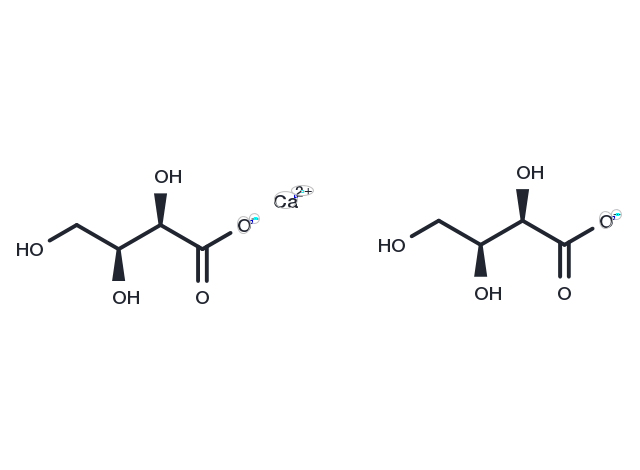Powder: -20°C for 3 years | In solvent: -80°C for 1 year


Calcium L-Threonate (L-Threonic acid Calcium Saltr) is probably derived from glycated proteins or from the degradation of ascorbic acid. Calcium L-Threonate is a normal component is aqeous humour and blood. Calcium L-Threonate is a substrate of L-threonate 3-dehydrogenase in ascorbate and aldarate metabolism pathway. It has been found to be a microbial metabolite.

| Pack Size | Availability | Price/USD | Quantity |
|---|---|---|---|
| 1 g | In stock | $ 30.00 |



| Description | Calcium L-Threonate (L-Threonic acid Calcium Saltr) is probably derived from glycated proteins or from the degradation of ascorbic acid. Calcium L-Threonate is a normal component is aqeous humour and blood. Calcium L-Threonate is a substrate of L-threonate 3-dehydrogenase in ascorbate and aldarate metabolism pathway. It has been found to be a microbial metabolite. |
| Synonyms | L-Threonic acid Calcium Salt |
| Molecular Weight | 310.27 |
| Formula | C8H14CaO10 |
| CAS No. | 70753-61-6 |
Powder: -20°C for 3 years | In solvent: -80°C for 1 year
DMSO: Insoluble
H2O: 2.5 mM
You can also refer to dose conversion for different animals. More
bottom
Please see Inhibitor Handling Instructions for more frequently ask questions. Topics include: how to prepare stock solutions, how to store products, and cautions on cell-based assays & animal experiments, etc.
Calcium L-Threonate 70753-61-6 Metabolism Others Endogenous Metabolite Calcium LThreonate Inhibitor inhibit Calcium L Threonate L-Threonic acid Calcium Salt inhibitor
